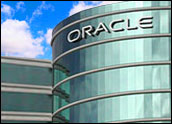
Two of the biggest names in CRM had trade shows recently. Oracle and Microsoft each held customer conventions in the same week, but the two could not have been more different. Microsoft attracted thousands of customers, partners, employees and press to New Orleans for Convergence, one of its big annual events. In a departure from convention, Oracle held a day-long exposition promoting its front and back office solutions on the Internet.
Each show was well planned and offered attendees much information, networking opportunities and chances to interact with knowledgeable people from the vendor organizations. One of the big differences between the two shows is the ultimate costs measured as time and money to put the events on, including transportation and lodging and entertainment for anyone attending.
Online Trend
I am not going to say that one way was better than another, but I will suggest that one approach might be a bit more attuned to the times and customer-centric, even if it is in a counterintuitive way.
While online trade shows have been around for a few years, with companies like On24 and Unisfair offering applications to support them, Oracle’s use of this mode really brings it home to CRM. Consider the advantages.
If you are trying to rein in costs (and who isn’t these days?) a virtual trade show gives you the opportunity to interact with a vendor and to get the information you need without incurring the high costs of travel. If you are a vendor, you save on renting the hall and transporting people and equipment as well as set up and the travel and entertainment costs of doing a show. On the other hand, if you think green, the idea of not transporting 10,000 or so of your closest friends saves a great deal on a company’s carbon footprint.
With everyone concerned about costs and carbon, the idea of a virtual trade show as one weapon in the marketing arsenal makes even more sense. The real question, of course, is not whether to convert everything to the virtual mode; it is more about what balance to strive for. Historically, nearly all shows have been the live variety, and because they were so expensive, the marketing calendar was partly built around them. But in a world where virtual shows become common, I think the absolute number of shows will increase mostly due to the new capabilities.
Wide Coverage, Tight Focus
Rather than trying to cram every possible idea and session into the live event, it will be easy to build specialized events that can be generated when the need arises. One of the problems with some of the more esoteric sessions that happen at shows is that the national or international convention is the only time when a vendor might be able to get a critical mass of people and thus make the session worth putting on. But a Web-based session by definition reaches everywhere (with the exception of North Korea and some parts of China, but you know what I mean), and so it could be cost effective to put on any time.
The net effect of more online shows could be greater interaction and greater innovation. Of course, there are other ways to bring a community of interest together, but so far communities have been more about capturing customer input and feedback, not about proselytizing. Perhaps this means that virtual trade shows will become a kind of community and the technology that supports them a part of community suites. You just never know.
Economic Necessity
Whatever the outcome, Oracle’s recent use of a virtual trade show is a great example of the kind of innovation possible when some of our entrenched beliefs are challenged by economic realities. Often the technology has been available and vendors have been working with early adopters to find the right niche. Then a disruption happens and the niche opens up.
In the last recession, Web conferencing came into its own. Prior to that, meetings were face-to-face, and as an analyst, the vast majority of my briefings were in that mode. Today, it is a rarity when I have a meeting to take a briefing. This recession could do for trade shows what the last recession did for briefings.
Of course, the recession is not the only factor, and I expect that energy costs will increase significantly once economic activity picks up again. In that situation, and with a new administration intent on managing carbon output, virtual trade shows will find another niche.
The conventional trade show is not in danger of disappearing, but a new paradigm has emerged that puts a new twist on it. People will still visit New Orleans for shows, but virtualization may make it a little easier to get a reservation at Arno’s.
NOTE: I went to a user group meeting last week in South Beach sponsored by Varolii, a company specializing in outbound customer communications to influence customer behavior. It was held at the Ritz-Carlton, a short walk from the beach. Let me just say that the bright sun and guava cheesecake convinced me that the above argument is not, shall we say, airtight.
Denis Pombriant is the managing principal of the Beagle Research Group, a CRM market research firm and consultancy. Pombriant’s research concentrates on evolving product ideas and emerging companies in the sales, marketing and call center disciplines. His research is freely distributed through a blog and Web site. He is working on a book and can be reached at [email protected].























































Virtual trade shows and events have certainly evolved over the years. With all the options available, it makes sense to check online before you begin packing your shipping crates.
Check out this blog post that further discusses the evolution of online events: http://lunchpail.knotice.com/2009/04/10/evolution-the-online-trade-show/